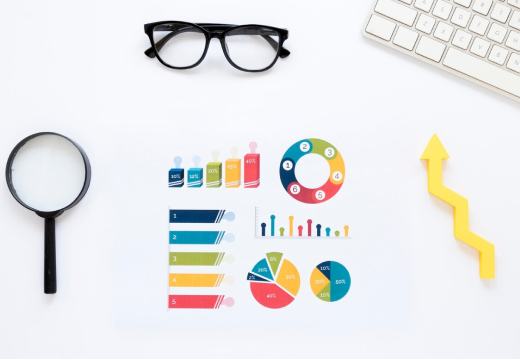Over 73% of marketers say their social media efforts have been effective in generating ROI, according to recent studies. With businesses spending increasingly more significant portions of their marketing budgets on social media, proving the effectiveness of those investments has never been more critical. Whether you’re a small business owner or managing a medium-sized business, the pressure to show the value of social media in driving actual revenue is ever-present.
But how can you know if your efforts on platforms like Facebook, Instagram, and Twitter are paying off? How do you measure your success beyond vanity metrics like likes and shares?
In this blog article, we will explore the concept of Social Media ROI—why it matters, how to measure it, and how to improve your marketing impact through better strategies and tracking.

1. What is Social Media ROI?
Social Media ROI refers to the return on investment that a business gains from its social media marketing efforts. It’s a measure of how effectively your social media campaigns are contributing to the overall business goals, such as increasing sales, improving customer engagement, or building brand awareness.
Beyond Likes & Shares: Many businesses fall into the trap of tracking vanity metrics like likes, shares, and comments. While these numbers provide an indication of engagement, they don’t tell the full story of how social media is contributing to their bottom line. Social media ROI statistics goes beyond these metrics by focusing on tangible outcomes like leads, conversions, website traffic, and actual sales.
Understanding the difference between vanity metrics and true ROI is key. For instance, a post might get hundreds of likes but result in no actual sales. Conversely, a post with fewer likes may drive traffic to your website, generate leads, and convert them into customers, showing a clear return on investment.
Link to Business Goals: Social Media ROI is inherently tied to larger business goals. For small and medium-sized businesses, aligning social media campaigns with objectives like increasing sales, improving customer satisfaction, or boosting brand visibility is crucial. Social media efforts should always be viewed in the context of these goals, ensuring that each post, tweet, or ad contributes to the business’s success.

2. The Importance of Measuring Social Media ROI
Justifying Marketing Spend: For many small and medium-sized businesses, marketing budgets are limited, and proving the value of every dollar spent is crucial. By measuring Social Media ROI, companies can demonstrate the effectiveness of their social media marketing efforts to stakeholders, investors, or higher-ups in the organization. It helps answer questions like, “Is this worth the investment?” or “What returns can we expect?”
Optimizing Strategies: When you have concrete data on your social media ROI, it becomes easier to fine-tune your strategies. Measuring ROI reveals which platforms, content types, and campaigns are most successful, allowing you to allocate resources more efficiently. If you’re seeing better returns from Instagram ads than from Facebook, you can adjust your strategy accordingly.
Tracking Growth: Measuring ROI is essential for tracking long-term growth. With the right metrics, businesses can monitor progress toward key objectives like building brand recognition, driving web traffic, or generating sales. Social media is a constantly changing landscape, and being able to track and measure growth allows businesses to adapt to changes, learn from past campaigns, and continue evolving.
Informed Decision Making: By understanding what is social media ROI? also plays a significant role in decision-making. Whether it’s budgeting for the next quarter or deciding which new platforms to invest in, the insights gained from ROI data help businesses make informed decisions that directly impact their marketing efforts and overall business performance.
3. Key Metrics for Measuring Social Media ROI
To effectively calculate Social Media ROI, businesses must look beyond likes and comments and focus on more meaningful metrics. Here are the key metrics to track:
Engagement Metrics: Engagement metrics such as likes, shares, comments, and time spent on content are valuable indicators of how customers interact with your brand. While engagement alone may not equate to direct sales, it shows that customers are paying attention, interacting with your content, and building a connection with your brand.
Lead Generation: One of the most important metrics to track is lead generation. This includes the number of leads generated through social media campaigns and the conversion rate of those leads to customers. Tracking these metrics allows businesses to see how effective social media is at nurturing interest and moving prospects down the sales funnel.
Traffic Metrics: Metrics like website visits, click-through rates (CTR), and referral traffic from social media platforms are crucial indicators of user intent and interest. When your social media posts drive traffic to your website, you can track which content resonates with your audience and prompts them to take action.
Sales Metrics: Direct revenue generated from social media posts, promotions, and ads should be tracked to measure Social Media ROI. In addition to tracking revenue, businesses can also calculate average order value (AOV) to understand how much customers are spending through social media-driven purchases.
Customer Lifetime Value (CLV): CLV measures the long-term value of customers acquired through social media. Customers who come through social media channels may have a higher lifetime value if they remain loyal and continue purchasing over time. Tracking CLV helps businesses understand the true impact of their social media campaigns.
Brand Sentiment: Businesses can measure customer perceptions of their brand by tracking sentiment analysis through social listening tools. Positive sentiment on social media can indicate a successful campaign, while negative sentiment may require course correction.

4. Tools for Measuring Social Media ROI
Several tools and platforms can help businesses measure Social Media ROI accurately. These tools can automate data collection, provide in-depth insights, and make ROI tracking easier.
Google Analytics: Google Analytics is one of the most powerful tools for tracking website traffic and conversions generated by social media campaigns. By setting up goals and UTM parameters, businesses can track how social media visits translate into actions on their website, such as signing up for a newsletter or making a purchase.
Social Media Insights: Most social media platforms provide built-in analytics tools. For example:
- Facebook Insights provides engagement metrics, audience demographics, and content performance.
- Instagram Insights offers data on reach, impressions, website clicks, and more.
- Twitter Analytics gives detailed insights into engagement, impressions, and follower demographics.
These tools can provide quick insights into how well your posts and ads are performing.
Third-Party Tools: For more advanced tracking and reporting, third-party tools like Hootsuite, Sprout Social, and Buffer allow businesses to manage multiple accounts, track engagement, monitor competitors, and analyze performance across different platforms. These tools also provide in-depth reports to help enterprises to understand the effectiveness of their campaigns better.
UTM Tracking: UTM parameters are tags added to the end of URLs that help track the performance of specific campaigns. When used with Google Analytics or other reporting tools, UTMs can provide a detailed breakdown of which social media platforms and campaigns are driving the most traffic and conversions.
5. Calculating Social Media ROI: Step-by-Step Process
Formula: The basic formula for calculating Social Media ROI is:
ROI (%) = [(Revenue – Investment) / Investment] * 100
Tracking Expenses: When calculating Social Media ROI, it’s essential to track all costs associated with running your campaigns. These costs can include:
- Content creation (graphics, videos, copywriting)
- Ad spend (e.g., Facebook ads, Instagram promotions)
- Tools and platforms (social media management tools, analytics software)
- Influencer partnerships
By accurately tracking these costs, businesses can get a true sense of their ROI.
Revenue Attribution: Revenue attribution refers to assigning the sales and conversions that occur as a result of your social media campaigns. It’s crucial to account for both direct and indirect conversions. For example, a customer may see a Facebook ad, visit your site, and purchase later. Attribution modeling helps businesses understand the entire customer journey and appropriately credit social media campaigns for sales.
Evaluating Results: Once you’ve calculated your Social Media ROI, it’s time to analyze the results. If the ROI is positive, it means your campaigns are generating value. However, if it’s negative, you may need to adjust your strategies to improve performance.

6. Common Challenges in Measuring Social Media ROI
Attribution Issues: Tracking conversions from social media campaigns can be challenging, especially with long sales cycles or multi-channel campaigns. A customer may interact with your brand multiple times across different platforms before making a purchase, making it difficult to determine the exact source of conversion.
Data Overload: Social media platforms generate vast amounts of data. Filtering through all this information can be overwhelming, and not all data is meaningful. It’s essential to focus on the metrics that matter and align with your business goals.
Linking Social Media to Sales: Directly linking social media engagement to actual sales is difficult for many businesses, especially for brand-building campaigns that don’t necessarily drive immediate revenue. It’s essential to recognize that social media can be a long-term investment in building brand awareness and customer loyalty.
Short-Term vs. Long-Term ROI: While tracking short-term ROI (e.g., sales from a specific ad campaign) is relatively straightforward, measuring long-term ROI (e.g., brand awareness, customer retention) is more challenging. Businesses need to focus on both short-term and long-term goals to get a complete picture of their Marketing Impact.
7. Best Practices for Maximizing Social Media ROI
Set Clear Objectives: Before launching any social media campaign, businesses should define specific, measurable goals. Whether it’s increasing brand awareness, generating leads, or boosting sales, having clear objectives helps ensure that your campaigns are aligned with your overall business strategy.
Target the Right Audience: To improve ROI, businesses must target the right demographics and psychographics. By understanding your audience’s preferences, pain points, and behaviors, you can craft more effective campaigns that resonate and drive better results.
Consistency & Frequency: Posting consistently helps maintain engagement and keeps your brand at the forefront of your mind. The more frequently you engage with your audience, the greater the chances of increasing ROI over time.
A/B Testing: A/B testing allows businesses to experiment with different ad copy, visuals, and calls to action to see which resonates best with their audience. By optimizing campaigns based on test results, businesses can maximize ROI.
Engage with Followers: Social media is a two-way street. Engaging with followers and responding to comments builds relationships, fosters loyalty, and encourages further interaction, all of which can improve Social Media ROI.
Track Performance Regularly: Regularly monitoring your campaigns and adjusting strategies based on real-time data is key to improve ROI. Analytics tools can help identify what’s working and what’s not, allowing businesses to pivot and optimize.

8. Case Studies: Successful Social Media ROI Measurement
Case Study 1 about Shopify: Shopify used Social Media ROI measurements to increase sales through targeted ads and influencer marketing. By tracking conversions with UTM parameters and analyzing customer behavior, Shopify optimized its social media ads to boost traffic and sales.
Case Study 2 about Coca-Cola: Coca-Cola’s long-term social media campaigns focused on brand awareness, leveraging sentiment analysis and engagement data to measure success. While direct sales weren’t the immediate goal, Coca-Cola’s strategy showed a clear ROI in terms of increased brand loyalty and customer engagement.
Case Study 3 of Small Business Example: A small local business used Facebook and Instagram ads to drive traffic to its online store. By tracking lead generation and conversion rates, the company saw a significant increase in sales and used this data to refine future campaigns for even greater ROI.
9. The Future of Social Media ROI Measurement
AI and Automation: As artificial intelligence and automation tools evolve, businesses will gain even more precise insights into their Social Media ROI. Predictive analytics will help brands anticipate customer behaviors and optimize campaigns for better performance.
Cross-Channel Measurement: Integrating social media ROI with other digital marketing channels, such as email marketing and paid ads, will provide a more holistic view of marketing effectiveness and attribution.
Influencer Marketing ROI: As influencer marketing grows, measuring the ROI of influencer partnerships will become increasingly important. Tracking the effectiveness of influencer campaigns will help businesses determine which partnerships are truly driving value.
In today’s digital landscape, measuring Social Media ROI is essential for businesses of all sizes. By tracking meaningful metrics, using the right tools, and optimizing data-based strategies, small and medium-sized businesses can maximize their marketing impact and ensure that every dollar spent on social media is an investment in their future success.
So, start measuring your social media efforts today. With the right tools, metrics, and insights, you can make smarter decisions that lead to better results, improved customer relationships, and long-term growth.

